Somme Carnage
Not only the Russian headquarters, but also the allied command in this war made many mistakes. In July-September, the offensive of the South-Western Front against the Austro-German troops developed on the Russian Front (Brusilov's breakthrough). Germany was forced to allocate additional forces to help Austria-Hungary so that the Austrian front would not collapse. As a result, the ability of the German command to maneuver between the fronts was noticeably limited. In August, the entire German reserve was one division. The German army was no longer able to simultaneously conduct two major operations in the French theater of military operations, and on September 2 of 1916, the offensive near Verdun was stopped.
The Allied command had to immediately stop the attack on the Somme, on this deadly direction, where the best forces of the British army were laid with bones and to shift efforts to another direction. The Germans drove all possible reserves to the Eastern Front. From Germany and from other fronts in the summer and autumn of 1916, the 33 divisions were transferred to the Russian front in the autumn. And to strengthen the defense on the Somme troops were removed from other sectors in France, weakening them. However, the Allied command stubbornly dug in the same place, in the place that the Germans had already further strengthened.
The Allies gathered their forces and on September 3 of the year after a powerful artillery preparation, which involved only over 1916 only heavy guns, again went to storm the German fortifications. Two British and two French armies (1900 divisions) were thrown into battle. However, the Germans were not idle and instead of 58 divisions, the 8 of the German divisions were already waiting for the allies. They received an order not to give a single inch of land, since there was no additional system of fortifications in the rear, so the Germans suffered heavy losses from artillery barrage. But the upcoming allies did not miss. The whole terrain began to resemble the lunar surface, dug up by craters and craters. The masses killed killed the air. As a result, the Somme has become a new "meat grinder", like Verdun. And in the world military stories "Somme" has become synonymous with a protracted and very bloody battle of attrition.
By 12 September 1916 of the year, the Anglo-French troops made their way, finally, to the third line of the defensive line of the German army, and in the French 6-sector they even managed to break through it. It seemed that the allies would still be able to enter the operational space. However, the German military machine again proved its high efficiency. September 13, with powerful concerted counterattacks from the north and south, German troops swiftly closed the gap and restored the integrity of the defensive line.
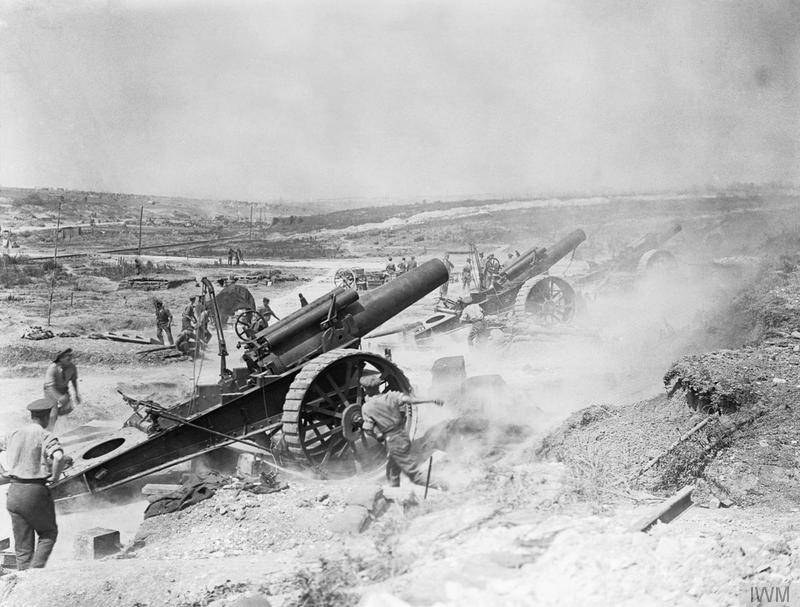
The British applied on the Somme 15 September new weapon — Tanks. Due to the low technical reliability of these tanks, only 18 combat vehicles took part in the attack, the rest went out of order due to malfunctions or difficult terrain. But the effect of surprise did the trick. A German eyewitness noted: “Everyone stood astounded, as if losing their ability to move. Huge monsters slowly approached us, rattling, limping and swaying, but moving forward all the time. Nothing held them back. Someone in the first line of the trenches said that the devil appeared, and this word spread through the trenches with great speed. " One tank drove to the village of Fleur, which the Allies had stormed for 35 days before. German soldiers fled, the village was taken without loss. Another machine went along the trenches, firing machine guns and "scored" about 300 prisoners.
The tanks were able to advance deeper into enemy defenses on 5 km in 5 hours, while the losses of the Allied infantry were small. Ten days later, the tank attack was repeated. But she was no longer unexpected. German troops found an "antidote" - beating tanks from cannons with direct fire, the machine was blown to shreds. There was a simple method - to dig trenches wider so that the armored car did not pass them. Later, the German gloomy genius came up with another tool - armor-piercing bullets. I must say that the Germans themselves for a long time refused to develop tanks. They thought that these were expensive “toys”, inefficient and not having a future.
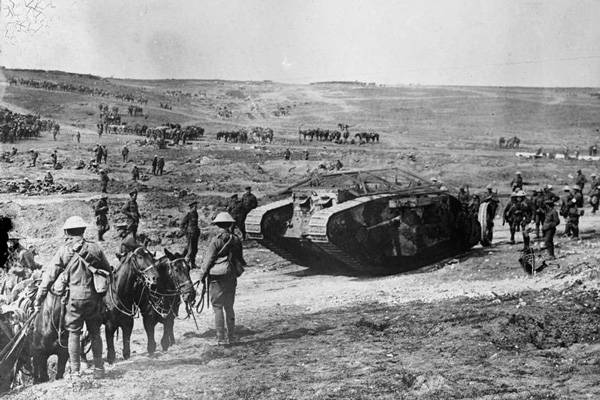
It is worth noting that the German military machine showed a very high efficiency on the Somme. As early as July 5 (and the battle began on July 1), the Germans were able to transfer five full-blooded divisions to the Sommu! One division per day - this rate of troop movement until the Second World War remained a peculiar example of the mobility of large military units. By 9 July 1916, the composition of the German 2 th von Belov army has increased by 11 divisions and 42 artillery batteries (of which 27 large-caliber). This immediately radically changed the overall situation in the breakthrough sector: the superiority of the Anglo-French troops was reduced from 3,8 to 1,6 times, which the allies immediately felt. The Allied Command had to throw troops into battle, which were to join in the matter after the Anglo-French forces had broken through to operational space. The English 5-I army of General Gaf and the French 10-I army of General Michelet entered the battle.
For a more flexible operational-tactical command and control of troops, the German command divided the army of General Fritz von Belov into two parts. The northern part, formed of divisions located north of the Somme line, became the 1 army under the command of von Belov. The divisions that were stationed south of the Somme were combined into the 2 Army under the command of experienced General Max von Halwitz. Then the Germans further strengthened their defense potential on this sector of the front by transferring the 6 Army to the Somme line. Field Marshal Ruprecht of Bavaria was appointed commander of Army Group Kronprinz Ruprecht (1, 2 and 6) on the right wing of the German front in the West.
It should also be said that the German troops in this battle showed very high stamina and defended very stubbornly. The town of Comble, for example, German soldiers successfully defended more than a month, and the last two weeks have fought in almost complete surroundings. On the eve of a decisive assault, the French 24 hours bombarded this item with chemical shells. When 25 of September, the French soldiers climbed, finally, on the ruins of Komble, there was practically no one to be taken prisoner - the German soldiers died in the trenches, but they did not retreat and did not hang out the white flag.
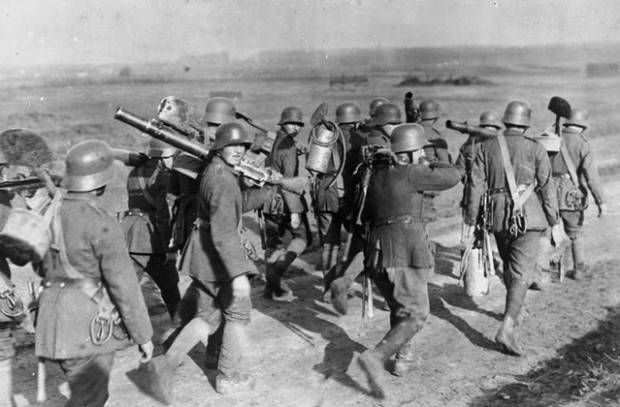
German machine gunners
By October 1916 of the year, completing the operation in the Verdun area, the German high command was able to significantly strengthen its heavy caliber artillery on the Somme. Nevertheless, slowly gnawing through the enemy defenses, the Anglo-French troops of 25-27 of October managed to seize the heights dominating the terrain between Somme and Ankrom. However, the Allies no longer remained to further develop the success of the forces - the combat potential of the troops and the fresh reserves were almost exhausted.
In addition, the French again stepped up the "meat grinder" in Verdun. The German command stopped the operation in order to transfer troops to the East. In the 6,5 months of the massacre, the Germans advanced only 7-10 km. The Allied Command did not come up with anything better than throwing troops back the kilometers. In October, the Verdunskiy meat grinder started working again, but in the opposite direction. Now the French were going to their deaths, and the German soldiers, sowing in the ruins of the fortifications, shot them. Two months went bloody battles. The French seized the ruins of the two forts of Vaud and Duomon and declared it a victory. December 18 Allied Command stopped this carnage.
The defeat of the Austro-German forces of the allied Rumania and the capture of Bucharest by General August von Mackensen forced the Allies to continue the attacks on the Somme until mid-November. The Allied Command expected that the continuation of the offensive here would not allow the German General Staff to transfer troops from the Somme to Romania and the Carpathians (against the Russian South-Western Front). True, battles took the form of private attacks with limited targets. Therefore, the German command, knowing full well that the Anglo-French offensive was exhausted, and removed some units from under Verdun and the Somme and sent them to the Eastern Front. In the second half of November, due to the complete exhaustion of the combat resources of the parties and the autumn thaw, all the offensive actions of the Allies on the Somme were stopped. Autumn rains turned plains on the Somme, plowed up by millions of craters and trenches, into an impassable mess. November 18 1916, the operation was stopped.
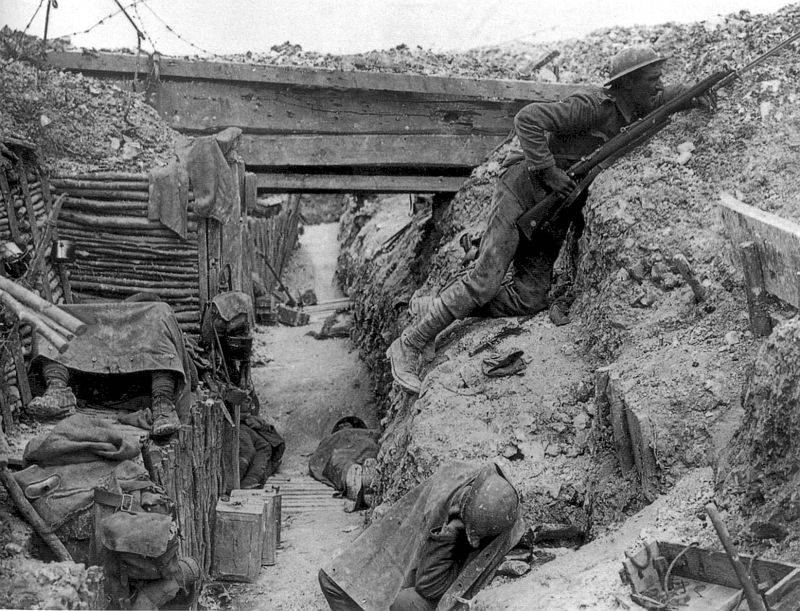
British positions
Results
The Anglo-French offensive operation on the Somme River was one of the largest in the First World War. For four months 51 British, 48 French, 67 German divisions, up to 10 thousand guns, 1 thousand aircraft participated in it.
In the world military history, the Somme has become synonymous with a long and very bloody battle of attrition. In the battle, more than 1 million people were killed and wounded, making it one of the bloodiest battles in human history. French troops lost more than 200 thousand people, the British - about 420 thousand people (according to other sources - up to 600 thousand people). Particularly heavy losses were incurred by the British troops, some divisions lost up to 80%. German casualties are estimated according to various sources in 465 — 500 thousand people killed, wounded and captured.
Britain, France and Germany suffered serious demographic damage, which, taking into account the future World War II, will have a negative impact on the European civilization and the white race as a whole. The Somme, as well as Verdun, destroyed the color of the German, French and English peoples - the best personnel and conscription contingents of the Great War. The significant demographic losses of the German army at Verdun and Somme, which could not be fully compensated by new mobilization stages, eventually led the German General Staff to begin withdrawing troops to the new frontier, the so-called Hindenburg Line, in 1917. The German army in fierce battles on the French and Russian fronts in the 1916 campaign of the year lost most of its combat potential and best cadres. This most negatively affected the ability of Germany to continue the war and the future of the German Empire itself.
Militarily, the battle ended in a draw. The alleged breakthrough of the German defense and the access of the Allied armies to the operational space, actually resulted in a bloodbath like Verdun on exhaustion of forces and gnawing at the enemy defense. The German defense for 4 and a half months of bloody battles was crushed just on the front of 35 km and in depth to 10 km. Germany eventually had to create a new line of defense. It was the minimum result. In this case, the Allied Command laid hundreds of thousands of soldiers. The allies did not even try to find a weak spot of the enemy in another direction. The British and French obstinately dug in the same place where the Germans were waiting for them.
German troops showed higher fighting qualities in the fight against the much superior enemy forces (especially at the initial stage of the battle). The battle on the Somme most clearly showed the shortcomings of a rigid methodical approach to the breakthrough of the fortified defense that prevailed in the general staffs of France and Great Britain. The British command dealt particularly badly, putting an entire army in the graves. The tactical training of the French units at the beginning of the operation turned out to be more appropriate to the conditions of the offensive than the British. But the mistakes of the command, which did not use the suddenness and impact force for the development of the offensive, were waiting for the “alignment” of the front by the British. The first use of tanks showed their prospects, as well as the need for more massive use and technical improvement.
However, this battle to the exhaustion of all reserves showed that victory would be for the Entente. The German Empire and its allies lost irreplaceable resources and are no longer able to resist the military and economic power of the Entente in the long war of attrition. The Entente also suffered heavy losses, but could make up for them. And the entry into the US war, with its powerful economy, finally predetermined the defeat of the German bloc.
“The struggle against starvation developed at the Somme in conditions that were particularly favorable to the Entente,” noted the Russian general and military theorist A.A. Svechin, double superiority in artillery, superiority in the air force, superiority in the rapid replacement of tired infantry with fresh units — all this allowed the Germans to inflict heavy losses and slowly but steadily push the front line forward. ”
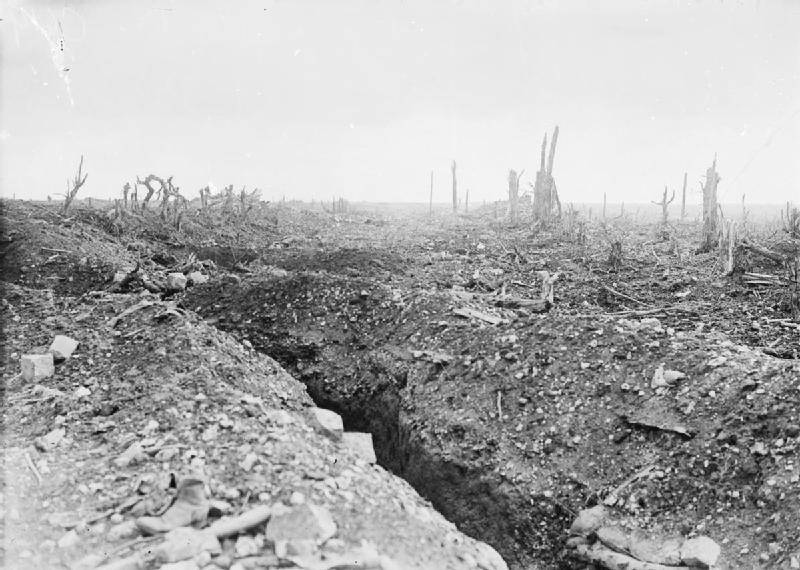
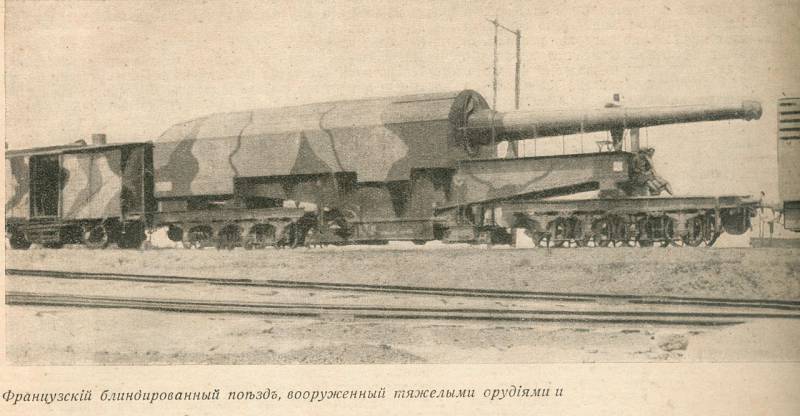
Information